Transport Week 2023 – Baltic maritime sector remains resilient in face of challenges
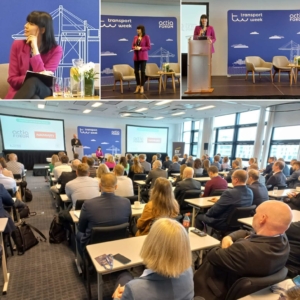
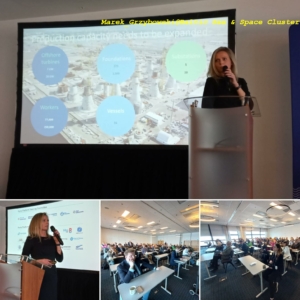
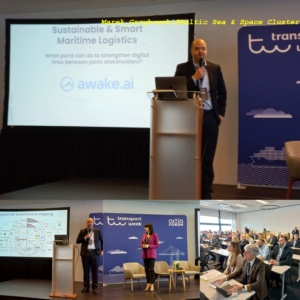
Over 200 participants from the transport and logistics sector gathered in Gdynia, Poland, on March 14th, 2023 for the first day of the Transport Week conference. Discussion covered the main trends impacting the development of the transport sector in the Baltic Sea Region (BSR), ranging from geopolitics, through smart solutions and cybersecurity issues to challenges related to offshore wind projects.
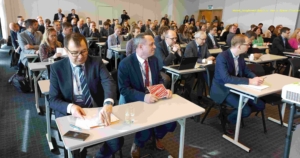

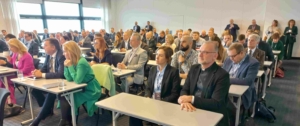
After introductory speeches by Michał Guć (City of Gdynia), Bogdan Ołdakowski (Actia Forum) and Piotr Frankowski (Namiary na Morze i Handel) it was straight down to business.
As is tradition, the event kicked off with the broad picture, which naturally had to include the impact or recent geopolitical shifts on the maritime transport industry. The analysis delivered by Dr Sönke Maatsch allowed for a degree of optimism. Despite the loss of the Russian connections, the ports in the BSR were able to register growth in multiple cargo groups in 2022. Crude oil imports increased due to replacement of pipeline oil and the shift of oil imports to other regions, in case of Poland – Norway, Saudi Arabia, the UK and the USA.
Given EU’s continuously strong stance on sanctions and the aforementioned wish to become independent in terms of energy supply, European ports will need to maintain their search for new reliable sources of revenue and evolve their existing business models. Close cooperation between ports and port cities will be highly beneficial for both parties as illustrated by the discussion between representatives form the Ports of Gdynia and Tallinn and the City of Gdynia. The Estonian port is planning to dive into the real estate business in order to recover revenue lost due to the loss of cargo from Russia. The panelists were also in agreement that it is absolutely crucial for ports and cities to work together and further enhance hinterland connectivity, a must for assuring that ports and the surrounding economic ecosystems remain competitive. In short, the maritime industry needs to be flexible, in constant pursuit of high level of adaptability and always on the lookout for new opportunities and market niches.
When facing struggles – expand
Despite an overall slowdown, the Baltic ports are developing at a steady pace. Algis Latakas (Port of Klaipeda) stated that while the Lithuanian port has suffered significant setbacks in turnover due to sanctions on Russia and Belarus (loss of ca. 13m tonnes as of 2022), infrastructure work is going forward at full speed. Over EUR 1.1bn have been invested in the development of port infrastructure during the past 10 years and there are more projects on the horizon, such as breakwater reconstruction and fairway dredging, quay reconstruction and the offshore installation port project. The value of the latter investment clocks at around EUR 27m and is planned to be completed in early 2026.
In the case of the Port of Gdynia, as illustrated by Michał Tuszyński (Port of Gdynia), the impact of recent difficulties linked to the global pandemic and geopolitical uncertainty wasn’t as hard. Growth has been maintained at a steady pace but other challenges present themselves. Unlike Klaipeda, Gdynia has far less space available for development. Thus, it is crucial for the port to secure complete and total accessibility via the expansion and enhancement of hinterland connectivity. By achieving this, Gdynia will be able to further develop as a logistics and multimodal transport platform. Some of the recent projects include the deepening of the approach fairway, completion of the New Public Ferry Terminal and the most ambitious one – the Outer Port. Again, long-term strategic thinking and expansion prove key to success.

Taking a peek just over the fence at the neighbor’s garden, one can easily tell that Gdańsk is doing pretty good as well. During his overview of Baltic Hub’s T3 expansion project, Malcolm Gregory (Baltic Hub) also touched upon the critical role of hinterland connectivity, especially rail connections. The immediate effect of the recent extension of the rail terminal led to a 25% increase in year-over-year rail traffic. And the T3 expansion? Construction works on the EUR 450m project started in October 2022 and the terminal is planned to start operations at the end of 2024.
Looking at the pace and scale of investments in some of the ports, it may be easy to forget that these projects, due to their long-term nature and huge financial cost, are subject to many risks that need to be carefully considered. Representatives from the Port of Hamburg Marketing, Ports of Szczecin-Świnoujście and ESPO accentuated and analyzed a number of these risks, including the as of now unknown long-term impact of inflation, challenges related to adhering to environmental regulations, as well as good understating of the intricacies of port operations by not only lobbyists but also policymakers.
One of the sometimes neglected and increasingly important trends affecting port operations is the issue of cybersecurity. To no one’s surprise, Andrzej Gab (EY) classified ports as highly attractive targets due to their exceptionally connected nature, always in contact with constantly changing parties with varying security standards. Therefore, ports are one the best parts of the logistics chain to implement and monitor cyber-security, especially given how sophisticated cyber-criminals are becoming.
Thankfully, digital advancement is not only about risks, as clearly pictured by Karno Tenovuo (Awake.AI). His company is leading the charge with all sorts of tools, including ETA/ETD prediction tools, port yard monitoring and tracking and piloting simulations solutions.
Offshore wind – a great opportunity but also a serious challenge

There is no doubt that the offshore wind industry presents one of the biggest opportunities for ports in recent years. The current capacity of offshore wind farms in Europe stands currently at 30 GW, accounting for 3% of electricity demand. But listening to Małgorzata Bartosik (Wind Europe) it quickly became apparent that governments want more. There are plans for increasing capacity in the North Seas to 76 GW and 20 GW in the Baltic Sea by 2030. This is an unprecedented increase and a great challenge for the port industry, which is crucial for meeting these demand levels.
Jakub Budzyński (PTMEW) offered more insights on the topic, agreeing that there is a very real and high risk of ports becoming the bottleneck in the development process of offshore wind farms. The discrepancy between demand and supply is massive. Handling offshore wind related cargo (such as blades, turbines and towers) is a huge logistical challenge, similarly to the storage space required which, as of right now, is insufficient. The increase in offshore wind capacity needs to go hand in hand with increased handling capacity at the ports if the sector is to reap full benefits linked to these projects.
Jesper Bank (Port of Esbjerg) characterized the offshore wind market as still largely immature, driven by continuous technological advancements. This everchanging landscape, together with a lack of clear standards or checklists ensuring the success of an offshore wind related project from the ports perspective, can lead to future setbacks. This is why cooperation and open dialogue between the various stakeholders involved will be a definite requirement.
